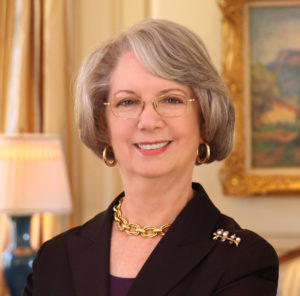Steve Lopez, a columnist for the Los Angeles Times, has been thinking about this question in much the same way as I have.
“We are so helplessly, irrevocably divided, it’s time to quit talking about coming together as one and do the only sensible thing,” he wrote in April. “This is who we are. A nation irrevocably divided, perhaps more than ever. We hate each other and I have proof.”
Lopez’ solution? To split the nation in two.
While that sounds drastic, I must admit that recent news showing gun-toting white nationalists battling armed protesters in the streets of American cities resembles more the videos of civil wars and insurrection in third-world countries than the America I thought I knew.
“For the first time in decades, perhaps since the founding, there is no voice of authority that everyone believes.”
For the first time in decades, perhaps since the founding, there is no voice of authority that everyone believes. Once upon a time, before the internet, we tended to believe what we read in the newspaper and heard on radio and then television. Everyone got the same national and international news from the two wire services, the Associated Press and United Press International. Everyone watched one of three network news shows, and Walter Cronkite’s words were gospel. Billy Graham was the moral authority for evangelicals; the Pope, for Catholics. Most people trusted their elected officials and their institutions.
There is no way now that I can discuss the issues — even the pandemic — with friends who are Trump supporters because we get the “facts” from different news sources.
Lopez described it well. “I watched 30 minutes of MSNBC’s merciless attacks on Trump and Fox News. Then I switched to Fox for 30 minutes of Sean Hannity’s militant defense of Trump, along with a volley of cannon shots at what he calls MSDNC.”
In this environment, how do we communicate with one another? How do we discern whom to believe?
I am a fact-driven news junky. Both my history major and journalism minor at Baylor University in the early 1960s were all about research and fact-gathering. Whether it was my history professor’s demand that I exhaust my resources (impossible now with internet) and cite everything I used from other sources or the student newspaper’s insistence on proper attribution, I not only was trained to document what I wrote but also to evaluate the reliability of my sources. Primary sources were always preferred. Second-hand reports needed to be checked, to avoid spreading rumors or untruths.
That’s why I trust our national newspapers. No newspaper wants to be sued for libel. Rogue reporters who write fake stories and provide fake attribution get fired. News, opinion and analysis are all labeled. During the 2016 presidential campaign, when Donald Trump attacked the news media as “sick” and biased, I began my own highly unscientific fact-checking study, which continues today.
I began to compare the news reported in the three national newspapers I read: the traditional Republican Wall Street Journal, Murdoch-owned like the New York Post and Fox News; the center-left The New York Times, an old-fashioned newspaper that still seeks balance and objectivity in its news reporting and even on its opinion pages; and the more aggressively resistance The Washington Post, the capital’s hometown newspaper, packed full with political news every day.
Most of the time, the three newspapers report the same major news and cite the same facts and sources. If there is a difference, it is usually found in the headlines, photographs and placement in the paper. What may be a Page One story, with a big headline and photographs, in the Times is sometimes a short story on the bottom half of an inside page in the Journal. And vice versa. In 2016, I saw so many unattractive photographs of an angry, finger-pointing Hillary Clinton in conservative media; but in the years since, photos of an angry, scowling president are everywhere.
Here is a notable example from last Friday’s top news. The Washington Post featured a story headlined “Fact-Checking President Trump’s acceptance speech at the GOP convention,” while the Wall Street Journal published a straight-forward summary of what he said, “RNC 2020: Trump Promises to Heal Nation, Attacks Biden on Jobs, Crime.” Nowhere did the Wall Street Journal provide any fact-checking, although both The Washington Post and The New York Times fact-checked speakers at both conventions. The opinion pages reflect the political position of the papers. Watching for the difference between news and opinion is critically important.
“Americans no longer share a common body of facts.”
That line is more blurred on television, particularly among cable news outlets, partially because they are not held to libel laws as strict as print media are. Since George Floyd’s murder, network and progressive cable news outlets have shown police officer Chauvin with a knee on Floyd’s neck constantly, while Fox and other conservative news channels have devoted their air time to video of violent protests on the streets, while minimalizing video of excessive force by police. Even the language is different. I know I’m talking to someone who watches Fox when she talks about “rioters,” “criminals” and “terrorists” instead of police brutality, peaceful protesters and white militias with their guns, Nazi symbols and Confederate flags.
But there is no point in arguing. I am wasting my breath when I tell friends that Fox is not a credible news source. Americans no longer share a common body of facts. Few have the money to subscribe to multiple national newspapers and news journals, and fewer have the time or attention span to read, compare and fact-check the news. What’s more, we all bring our biases to the news sources we choose to believe.
My generation of journalism students and faculty at Baylor was committed to the words of Jesus in John 8:32: Ye shall know the truth, and the truth shall make you free.
It never has been harder. Since the pandemic began, with all the false claims and conspiracy theories, my one hour a day with three newspapers has stretched to two hours with six papers, along with Apple News headlines and Facebook — for whatever news, malicious memes and conspiracy theories from online sources I never heard of have been posted.
For that rare friend who wants to see and understand all sides, I advise: “Read widely. Don’t leave cable news or talk radio on in the background all day. Hearing the screaming sound bites every 30 minutes, whether from Fox or MSNBC, amounts to brainwashing. Watch network evening news as well as Fox News.”
More often, I wait for the question or the challenge. Recently a friend urged me to sign a petition for some right-wing cause. When I told her I wasn’t a Republican, she was shocked.
“Are you a socialist?”
“No, of course not, and neither are most of the Democrats I know. But I don’t consider myself a Democrat. I’m a Christian evangelical progressive who takes seriously Jesus’ words — to feed the hungry, give water to the thirsty, welcome the stranger, clothe the naked, care for the sick and the imprisoned — and it seems to me that Democratic candidates share those values more often than Republicans.”
 Ella Wall Prichard is a journalism graduate of Baylor University who is known as a philanthropist and advisor to Baptist causes in Texas and beyond. A longtime member of First Baptist Church in Corpus Christi, she has served on committees and boards of the Baptist General Convention of Texas and the Cooperative Baptist Fellowship. She was a member of the Baylor Board of Regents and a director of the Baylor Alumni. Her book, Reclaiming Joy: A Primer for Widows, recounts the story of her husband’s untimely death and her suddenly finding herself the president of the family oil business.
Ella Wall Prichard is a journalism graduate of Baylor University who is known as a philanthropist and advisor to Baptist causes in Texas and beyond. A longtime member of First Baptist Church in Corpus Christi, she has served on committees and boards of the Baptist General Convention of Texas and the Cooperative Baptist Fellowship. She was a member of the Baylor Board of Regents and a director of the Baylor Alumni. Her book, Reclaiming Joy: A Primer for Widows, recounts the story of her husband’s untimely death and her suddenly finding herself the president of the family oil business.
Suggested additional reading
The Loudest Voice in the Room: How the Brilliant, Bombastic Roger Ailes Built Fox News—and Divided a Country, by Gabriel Sherman. Penguin Random House, 2014.
“Column: The coronavirus pandemic has made one thing perfectly clear: It’s time to split the country,” by Steve Lopez. Los Angeles Times, April 22, 2020.
The Media Bias Chart 5.1. by Vanessa Otero. Ad Fontes Media, December 1, 2019.
“TV Ratings for Biden and Trump Signal an Increasingly Polarized Nation,” by Michael M. Grynbaum. The New York Times, August 28, 2020.
“Fact-checking Trump’s lies is essential. It’s also increasingly fruitless,” by Margaret Sullivan. The Washington Post, August 29, 2020.
“Trump’s Favorite Four-Letter Word,” by Brian Stelter. The New York Times, August 24, 2020.
“‘But I Saw It on Facebook’: Hoaxes Are Making Doctors’ Jobs Harder,” by Seema Yasmin and Craig Spencer. The New York Times, August 28, 2020.
“What If Facebook Is the Real ‘Silent Majority’?” by Kevin Roose. The New York Times, August 27, 2020.


